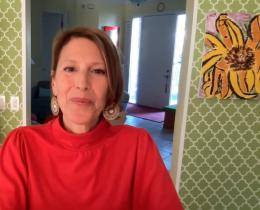So many times, at the start of a TMI Project workshop, participants will say with dread in their voice, “I don’t think I have a story.”
We're never worried about this. Everyone has a story. Here are four tips for creating this experience for yourself and discovering the story you have to tell:
1. Create a Safe Space
TMI Project workshop leaders go to great lengths to create a safe space for deep sharing. We’ve been teaching true storytelling workshops for eight years and have developed a lengthy list of guidelines in an effort to provide a sense of safety for all involved. There are too many to share here, but I’ll let you in on a few:
- Write about experiences from which you have enough critical distance. Don’t dig into your open wounds to find a story. Not only will you feel more comfortable sharing, but you will have the gift of perspective, which every good story needs.
- Consider everyone in the room. We welcome the sharing of challenging stories, but if you’re writing about things that could be triggering for someone else, refrain from including explicit and graphic details.
- Never critique or criticize. Our process is collaborative. We help each writer find the story they need to tell by asking questions and offering supportive feedback.
2. Free Write With Prompts
We start our free writing sessions with curated writing prompts, specifically geared toward finding the story you most need to tell. We set a timer, generally for no more than 20 minutes. A set, short period of time helps take away the pressure. We ask that you keep your pen moving. There’s no need to pay attention to spelling, grammar, or sentence structure.
Here are a few writing prompts to try at home.
Write a story about:
- Something you’d like a second chance at
- Something you didn’t get away with
- The “me” nobody knows
3. Allow the So-Called Ugly Emotions
As you go deep with writing the truth, the so-called “ugly emotions” are likely to come up. We identify them as fear, anger, guilt, and shame. People often worry that if they admit to these feelings, and the stories that elicit them, they won’t be “likable.” But when you admit to those things, you are more likable. Because your story is relatable, listeners can have compassion for you and feel as if they have permission to own these feelings for themselves.
4. Read Your Writing in a Group Setting
Perhaps one of the most powerful tools for finding the story you need to tell most is writing in community. When we write at home alone, we only have our own mind to run ideas by. As the writer Anne Lamott suggested, the mind is a bad neighborhood—you shouldn’t go there alone! When we free write in a group, and share our writing with others, our peers will respond to pieces of our work in ways we couldn’t anticipate. Stories you thought would disgust people incite hope and inspiration. Stories you thought were boring leave the group riveted and wanting more.
Airing out your work in a supportive environment will change your narrative and, most likely, your life.



